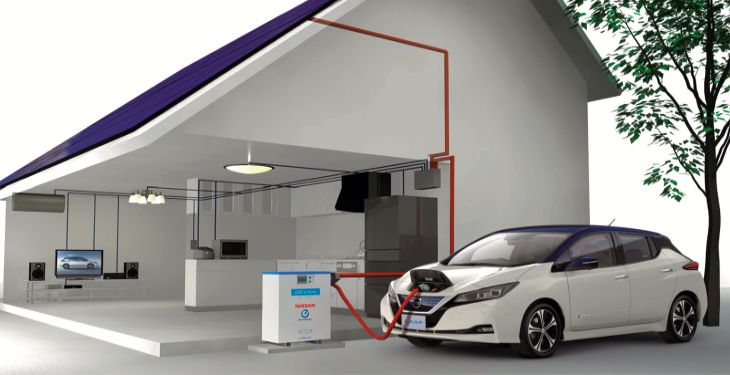Nissan has unveiled new pilot projects this week to power buildings with Leaf electric vehicles and it is launching “Nissan Energy” to eventually commercialize this vehicle-to-home/building system with a new partner: Fermata Energy.
When Nissan launched the next generation Leaf last year, one of the main new features was the built-in bidirectional charging capacity.
It’s something that the Japanese automaker has been working on for years, but it was mostly only part of some test programs here and there.
A year after the launch of the next-gen Leaf, we haven’t heard much about the company utilizing the feature, but now Nissan is launching a new ‘Nissan Energy’ program to take full advantage of it, according to Electrek.com.
Nissan says that the goal is for “owners of Nissan’s electric vehicles to be able to easily connect their cars with energy systems to charge their batteries, power homes and businesses or feed energy back to power grids.”
The main goal is to reduce charging demand by shaving peak demand using Leaf battery packs, which is mainly useful to businesses, but the same technology can also be used by Leaf owners to power their home.
They listed three pilot projects where they are going to be testing the system with Leaf fleets:
Franklin, Tennessee: Nissan North America will be piloting the use of LEAF vehicles to assist in powering its headquarters facilities during peak electrical demand times, anticipating significant cost savings
Hagen, Germany: LEAF vehicles will be used as a reserve for the German electricity grid, in an innovative pilot project involving Nissan, technology company The Mobility House, energy supplier ENERVIE and transmission system operator Amprion
Japan: Nissan is working with partners such as electric and telecom companies, conducting field tests of vehicle-to-grid and virtual power plant systems to confirm and promote opportunities for electric vehicles to assist with managing energy.
